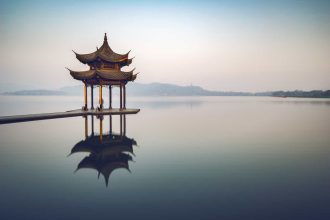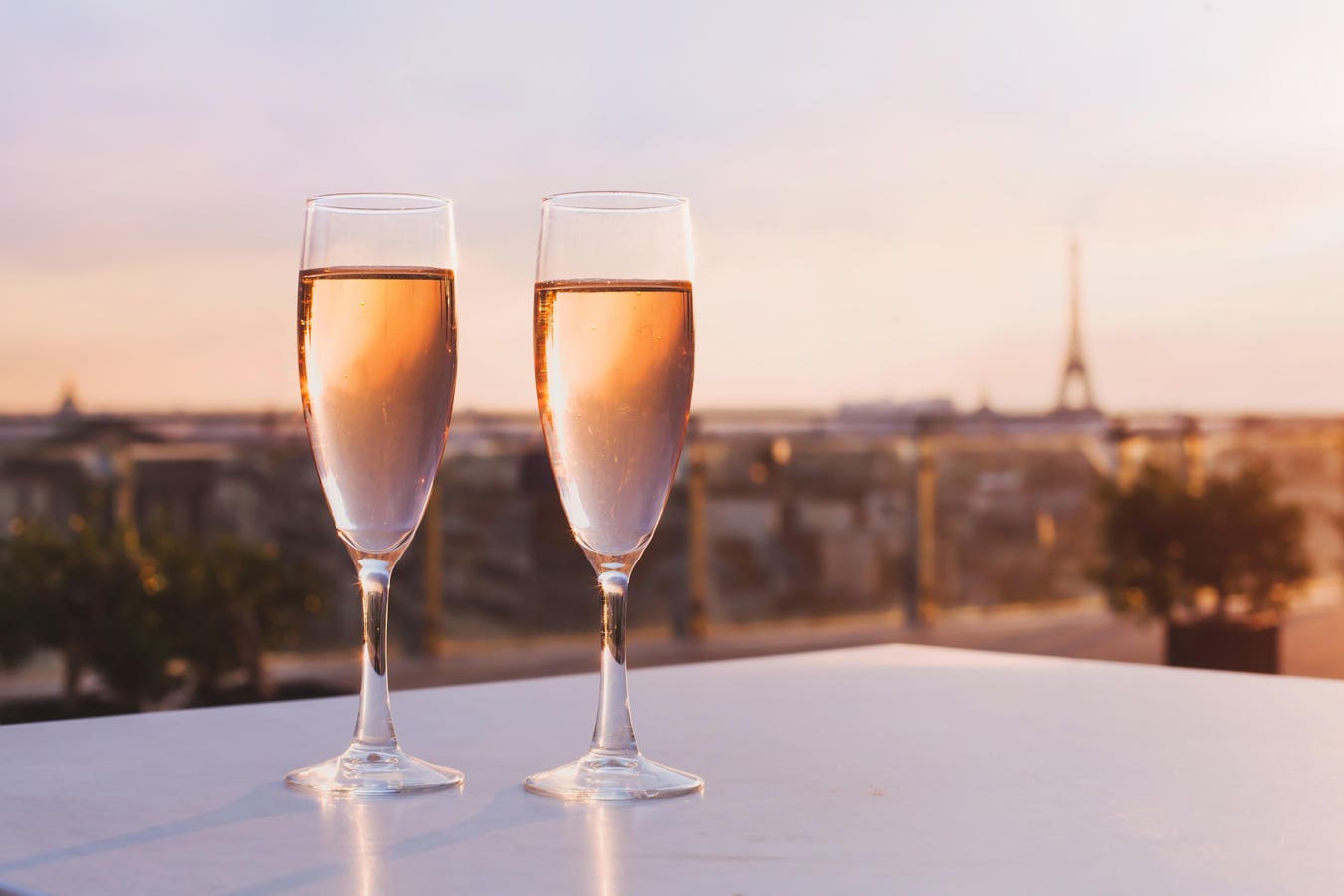For wine lovers, few experiences are as joyful as traveling to a region known for its sparkling wines. From the rolling vineyards of Northern Italy to the lush, volcanic slopes of Japan, each respective wine region tells a story of the land, the people, and the traditions that have been honed over generations.
And while Champagne often steals the spotlight, the world of sparkling wine is gloriously diverse, encompassing a range of styles, grapes, and techniques. In crafting this guide, the goal was to highlight sparkling wine regions that not only produce exceptional wines but also offer memorable visitor experiences. Each destination featured below boasts a unique history, striking landscapes, and wine traditions that deserve to be celebrated.
Whether you’re seeking the prestige of world-renowned producers or the charm of small, boutique wineries, these regions promise to deliver, at the very least, an exceptional glass of bubbles.
Champagne, France
What kind of sparkling wine is Champagne, France known for? The world’s most iconic sparkling wine, of course.
The Champagne region, located just northeast of Paris (hello, perfect day trip), is the birthplace of the world’s most celebrated sparkling wine. Its history dates back to the 17th century, with figures like Dom Pérignon contributing to the development of the traditional method, or méthode champenoise, which involves secondary fermentation in the bottle. This technique has become the standard for high-quality sparkling wine production worldwide.
Annually, Champagne produces approximately 300 million bottles, with a significant portion exported globally. The region’s unique chalky soils and cool climate provide ideal conditions for cultivating Chardonnay, Pinot Noir, and Pinot Meunier grapes, the primary varieties used in Champagne production.
The optimal time to visit Champagne is during the harvest season in September and October, when the vineyards are bustling with activity. This period offers visitors the opportunity to witness grape harvesting and participate in various wine-related events.
Prosecco Hills, Italy
What kind of sparkling wine is Prosecco known for? The bright, fruity bubbles of its namesake, made primarily from the Glera grape.
Situated in the Veneto region of northeastern Italy, the Prosecco Hills are famed for producing Prosecco, a sparkling wine made primarily from the Glera grape. The area’s winemaking history spans centuries, but Prosecco’s rise to international prominence really only occurred in the last decade, particularly after the establishment of the Prosecco DOC in 2009.
The region produces over 600 million bottles annually, making it one of the world’s largest sparkling wine producers, and the rolling hills and favorable climate contribute to the wine’s characteristic light and fruity profile.
Visiting during the spring months of April and May provides a pleasant climate and the chance to experience local festivals celebrating new vintages.
Cava Region, Spain
What kind of sparkling wine is the Cava region known for? Traditional method sparkling wine from indigenous Spanish grapes.
The Penedès region in Catalonia, near Barcelona, is the heartland of Cava production. Cava emerged in the late 19th century when local winemakers adopted the traditional method to produce sparkling wine, utilizing indigenous grape varieties such as Macabeo, Xarel·lo, and Parellada.
Spain produces approximately 250 million bottles of Cava annually, with a fairly equal amount exported and enjoyed locally. The region’s diverse microclimates and soils contribute to a range of Cava styles, from crisp and refreshing to rich and complex.
The best time to visit is during the harvest season in September, when the vineyards are active, and numerous wine festivals take place.
Yamanashi Prefecture, Japan
What kind of sparkling wine is Yamanashi Prefecture, Japan known for Sparkling wines crafted from the indigenous Koshu grape.
Yamanashi Prefecture, located near Mount Fuji, is Japan’s premier wine-producing region, accounting for approximately a third of the country’s domestic production. The area’s viticulture history dates back to the Meiji era in the late 19th century, with a focus on the native Koshu grape, which has been cultivated in Japan for over a thousand years.
While sparkling wine production in Yamanashi is relatively modest compared to other regions, it has been growing steadily. Wineries in the area have embraced traditional methods to produce sparkling wines that highlight the delicate flavors and crisp acidity of the Koshu grape. The region’s volcanic and granite soils, along with its continental climate, contribute to the minerality and freshness of these wines.
The best time to visit Yamanashi is during the grape harvest season in September and October. This period offers visitors the opportunity to participate in harvest activities and enjoy the region’s natural beauty, including views of Mount Fuji.
Sussex, England
What kind of sparkling wine is the English Wine Country known for Award-winning and champagne-competing wines made using the traditional method.
The Sussex area, in southern England, has gained acclaim for its sparkling wines, often compared favorably to Champagne. The area’s chalky soils and cool climate provide conditions similar to those of the Champagne region, particularly as a result of global climate changes, making it suitable for growing Chardonnay, Pinot Noir, and Pinot Meunier. In 2022, Sussex wine gained Protected Designation of Origin status, and many French champagne producers have begun buying land in the area as a result.
Though very little is exported, Sussex produces a significant portion of England’s sparkling wine, with numerous vineyards contributing to the region’s reputation. The focus is on traditional method production, resulting in wines with notable acidity and complexity.
The best time to visit is during the summer months of June to August, when the vineyards are in full bloom, and various wine festivals and events take place, offering visitors a comprehensive wine tourism experience.
Marlborough, New Zealand
What kind of sparkling wine is Marlborough known for? Méthode Marlborough sparkling wines with vibrant acidity and fresh fruit flavors.
Marlborough, located at the northern tip of New Zealand’s South Island, is primarily known for its Sauvignon Blanc but has also developed a reputation for high-quality sparkling wines. The region’s winemaking history began in the 1970s, with wine production gaining momentum in the subsequent decades.
While sparkling wine production in Marlborough is relatively small compared to its still wine output, the focus on the traditional method has resulted in wines that are gaining international recognition. The region’s cool climate and abundant sunshine contribute to the development of vibrant acidity and fresh fruit flavors in the wines.
Visiting during the Marlborough Wine & Food Festival in February provides an excellent opportunity to sample a wide range of local wines and cuisine, set against the backdrop of the region’s stunning landscapes.
Napa Valley, USA
What kind of sparkling wine is Napa Valley known for? Californian sparkling wines with a New World twist, emphasizing bold flavors.
Napa Valley, located in California, is renowned for its still wines but also boasts a growing sparkling wine industry. The region’s winemaking history dates back to the 19th century, with sparkling wine production becoming more prominent in the late 20th century as producers sought to diversify their offerings.
Napa Valley’s sparkling wine production is relatively modest, with a focus on quality and innovation. The region’s diverse microclimates and soils allow for the cultivation of various grape varieties, contributing to a range of sparkling wine styles.
The best time to visit is during the harvest season from August to October, when the vineyards are bustling with activity.
Read the full article here





